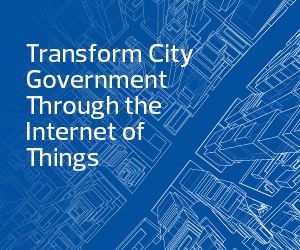The National Institute of Standards and Technology defines the IIoT as “the sensors, instruments, machines and other devices that are networked together and use Internet connectivity to enhance industrial and manufacturing business processes and applications.”
Government-owned utilities, such as water utilities, benefit from implementing and securing the IIoT.
How Does the IIoT Help Governments?
A water utility connected to the IIoT may rely on sensors to detect when to operate appropriate devices. A sensor may detect when temperature runs too low in a water system, and the sensor may trigger an actuator that lights a burner to increase temperature. A sensor may detect that water isn’t flowing in the proper route, and it may open a valve that redirects water flow.
“All of these assets are orchestrated into systems that help create all of these societal advantages and benefits to organizations,” says Grant Geyer, chief strategy officer at cyber-physical systems security company Claroty.
On its website, Cisco notes a number of benefits of IIoT devices, including:
- Improved worker safety
- Increased production uptime
- Consistent product quality
- Regulatory compliance
- Improved operational efficiencies
- Real-time data collection and processing
“There are over 150,000 public drinking water systems within the United States, most of which are very small entities at the state and local level,” Geyer says. “The Industrial Internet of Things connects their operations to places that have a critical dependence on water, such as hospitals. This interconnected system has provided so many advantages to the citizens of the United States, but with that digital transformation comes digital risk.”
RELATED: Edge computing is necessary for smart cities, but hard to secure.
How Does the Industrial Internet of Things Open the Door to Risks?
As illustrated by the rural Texas water utility attacks earlier this year, adversaries see attacks on public utilities as a means of disrupting American government operations.
Public utilities have adopted IIoT solutions to save money and to make operations more efficient for American citizens, Geyer says.
“For example, Russia was attacking rural water treatment plants, and at one plant caused an overflow of the water system. It’s important to frame that in context: Every cyberattack happening out there is either driven by criminal intent to steal money or driven for the potential of creating sabotage or projecting power from a foreign adversary into the United States,” Geyer says.
Hale Center protected its IIoT systems by disconnecting them from the internet. That’s one way to secure systems, particularly in an emergency: air-gap them.
LEARN MORE: Multi-tier backup and recovery is crucial to cyber resilience.
Meanwhile, utilities must ensure the IT assets connected to OT devices have the appropriate level of security built into them. The U.S. Cybersecurity and Infrastructure Security Agency warns, “As a nation, we have allowed a system where the cybersecurity burden is placed disproportionately on the shoulders of consumers and small organizations and away from the producers of the technology and those developing the products that increasingly run our digital lives.”











